-
January 27, 2020 by Total Fire and Safety
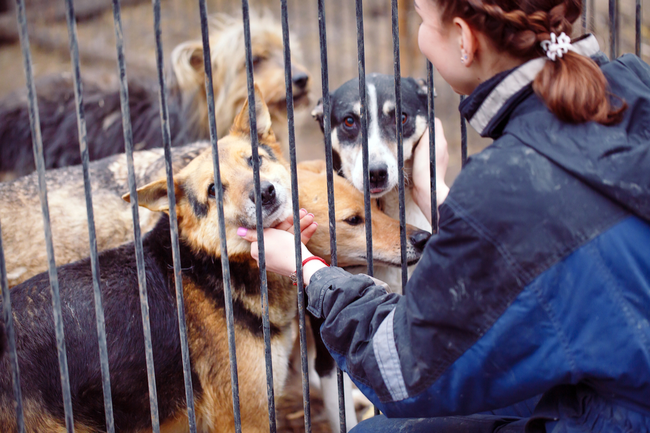
How important is the fire code for animal shelters? Deadly fires at kennels and animal shelters are not uncommon across the U.S. In the past year, over 100 dogs have died in kennel fires, including here near Chicago.
On the night of January 14, 2019, a West Chicago animal kennel went up in flames. Thirty-one dogs perished in the fire. The exact cause of the fire is unknown, but investigators determined no staff was present at the time and no working fire sprinklers were on property. The kennel did have fire detectors, but no one was around to hear them.
The tragedy prompted lawmakers to come up with legislation to ensure such an event never happens again. The new law, signed in August, went into effect January 1. The legislation requires kennels to be staffed 24/7 or have sprinkler systems or alarms that alert local fire departments.
When it comes to arming animal shelters with lifesaving equipment, Total Fire and Safety can help with the installation of …..
Wireless Fire Alarms
- Preferred by fire departments, they are more reliable than land-based systems for their quick and accurate response.
- They can save phone line costs.
- They reduce false alarms to fire departments
- Minimal and guaranteed wireless radio alarm monitoring fees
Fire Sprinkler Systems
- A working fire sprinkler is 96% effective in containing a fire.
- Monthly, quarterly, and annual inspections are necessary to ensure safety and keep your building fire code compliant.
- TFS uses the most up-to-date technology and thorough process to prevent sprinkler failure.
Working fire extinguishers can keep a small fire from getting out of control when someone is in the facility. Every business needs working fire extinguishers at the ready, and be trained to use them.
- A fire extinguisher is your first line of defense, 24/7.
- 30% of fire extinguishers are not in working order. We complete a 12-point inspection to make sure they are fire ready.
- On-site training is provided to guarantee proper employee usage.
All it takes is basic fire protection to save animal and human lives.
Illinois’ new fire code will help protect our furry friends from another senseless tragedy and prevent irreparable damage to lives, structures, and pocketbooks. Total Fire and Safety can equip your facility with the latest fire protection and help maintain the equipment installed. Give us a call today at (630) 960-5060.
Category: Business Safety, Fire Alarm Monitoring, Fire Extinguishers, Fire Extinguishers, Fire News, Fire Safety, Sprinkler Systems, Total Fire and Safety Tags: commercial fire safety, commercialfiresprinkler, employee training, fire and safety equipment, fire and safety solutions, fire safety in the news, Firesprinkler, Total Fire and Safety, wireless fire alarm monitoring, wireless fire alarms, wireless fire alarms for business | Comments Off on A New Fire Code for Animal Shelters in Illinois!
-
December 23, 2019 by Total Fire and Safety

We wish you the warmth and cheer of the season!
Thank you for your continued support throughout the year.
From all of us at Total Fire & Safety
Twelve Days of Fire Safety
On the first day of safety, Total Fire gave to me…
A safe and code compliant facility!
On the second day of safety, Total Fire gave to me…
Two emergency plans
and a safe and code compliant facility!
On the third day of safety, Total Fire gave to me…
Three eyewash stations
Two emergency plans
and a safe and code compliant facility!
On the fourth day of safety, Total Fire gave to me..
Four first aid kits
Three eyewash stations
Two emergency plans
and a safe and code compliant facility!
On the fifth day of safety, Total Fire gave to me…
FIVE WIRELESS ALARMS
Four first aid kits
Three eyewash stations
Two emergency plans
and a safe and code compliant facility!
On the sixth day of safety, Total Fire gave to me…
Six extinguishers inspected
FIVE WIRELESS ALARMS
Four first aid kits
Three eyewash stations
Two emergency plans
and a safe and code compliant facility!
On the seventh day of safety, Total Fire gave to me…
Seven exit signs Six extinguishers inspected
FIVE WIRELESS ALARMS
Four first aid kits
Three eyewash stations
Two emergency plans
and a safe and code compliant facility!
On the eight day of safety, Total Fire gave to me…
Eight backflow inspections
Seven exit signs
Six extinguishers inspected
FIVE WIRELESS ALARMS
Four first aid kits
Three eyewash stations
Two emergency plans
and a safe and code compliant facility!
On the ninth day of safety, Total Fire gave to me…
Nine sprinkler systems
Eight backflow inspections
Seven exit signs
Six extinguishers inspected
FIVE WIRELESS ALARMS
Four first aid kits
Three eyewash stations
Two emergency plans
and a safe and code compliant facility!
On the tenth day of safety, Total Fire gave to me…
Ten safety trainings
Nine sprinkler systems
Eight backflow inspections
Seven exit signs
Six extinguishers inspected
FIVE WIRELESS ALARMS
Four first aid kits
Three eyewash stations
Two emergency plans
and a safe and code compliant facility!
On the eleventh day of safety, Total Fire gave to me…
Eleven fire pumps serviced
Ten safety trainings
Nine sprinkler systems
Eight backflow inspections
Seven exit signs
Six extinguishers inspected
FIVE WIRELESS ALARMS
Four first aid kits
Three eyewash stations
Two emergency plans
and a safe and code compliant facility!
On the twelfth day of safety, Total Fire gave to me…
Twelve new extinguishers
Eleven fire pumps serviced
Ten safety trainings
Nine sprinkler systems
Eight backflow inspections
Seven exit signs
Six extinguishers inspected
FIVE WIRELESS ALARMS
Four first aid kits
Three eyewash stations
Two emergency plans
and a safe and code compliant facility!
Category: Fire Alarm Monitoring, Fire Equipment Inspections, Fire exits, Fire Extinguishers, Fire News, Fire Safety, Sprinkler Systems, Total Fire and Safety, Uncategorized Tags: commercial fire safety, fire and safety equipment, fire and safety solutions, Fire Extinguisher, fire safety, Total Fire & Safety, wireless fire alarms | Comments Off on Happy Holidays from Total Fire & Safety
-
November 12, 2019 by Total Fire and Safety
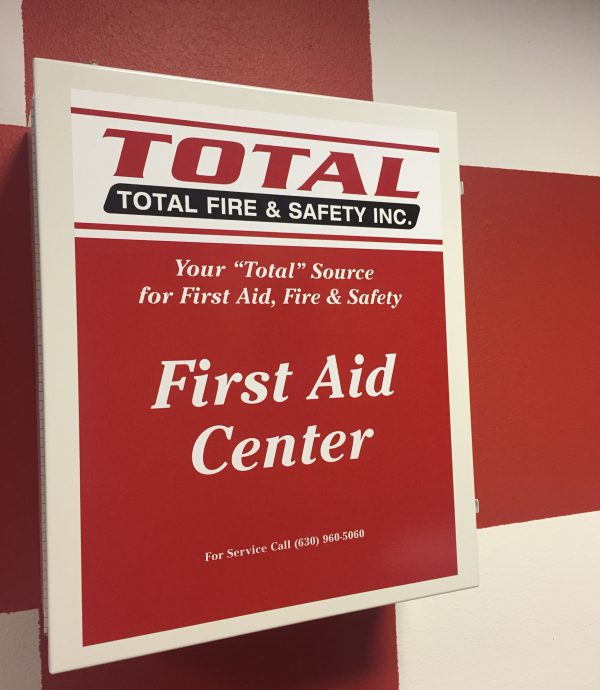
Does your organization have a first aid kit hanging on the wall? It sits there silently like a dutiful soldier, ready and waiting for any emergency. But with winter on its way, you may be surprised at how often that first aid kit can be called into service during the coldest months of the year.
Winter weather can easily compromise employee safety, whether the workplace is outdoors or in an office. It is important to keep first aid kits well stocked with winter safety essentials. Before you start planning your holiday office party, let’s look at your first aid kit and what we can do to “winterize” it.
OSHA has established a list of required first aid supplies for the workplace. Depending on the business and specifics of the environment, there are different first aid requirements. Employers are responsible for keeping the first aid kit stocked and up to date with the necessary supplies needed. They include:
- Band-aids, Elastic Bandages/Adhesive Tape, Sterile Gauze Pads/Rolls and Large Pressure Bandages in different shapes and sizes of bandages for possible falls, cuts, and scrapes. The opening of cracked, chapped winter skin can precipitate the need for a band-aid or a fall on the ice can merit more serious first aid treatment.
- Non-Latex Gloves, Antiseptic wipes, Peroxide and Alcohol and Triple Antibiotic Ointment will help keep those helping tend a wound safe, and also help the wound heal more quickly. Protect skin from contamination.
- Eye Pads and Eye Wash can help tend weather-related discomforts on the way into work.
- Tongue Depressors can be used to check throat irritations during winter flu season or be used as splints for possible weather-related injuries.
- CPR Shields can protect users from bodily fluids when CPR is essential. In winter, shoveling and overexertion in the cold can lead to cardiac arrest and the need for onsite CPR. Total Fire & Safety can help with employee training in this area.
- Triangular Bandages can be onsite in the event of the need for a sling or tourniquet. Falls on ice or minor accidents may require such dressings.
- Cold Packs: Instant cold packs help with sprains, fractures, burns, etc.… common injuries associated with falls, accidents, or overheating.
- Thermometer: Determines body temperatures. The flu and other winter maladies can be contagious! Detecting an above normal temperature in an employee can prevent an outbreak that can take down a workplace.
- Aspirin, Tylenol, or Motrin can help alleviate the symptoms of a cold.
- Penlight can be used to look in ears and throats for maladies, or even pupils for possible concussion victims.
- Antihistamine Tablets and Hydrocortisone to quell the allergies and dermatitis from the dry air, increased dust, and lack of fresh air during the winter months.
- Blankets to use in emergencies, such as frostbite, hypothermia, etc.
For any company, the first aid kit can be your first offense against the common winter injuries that employees can suffer en route or while at work:
Sprains and Broken Bones
Ice covered roadways, sidewalks, parking lots, and driveways put you at risk for a nasty fall which can result in a sprain or broken bone. If the injury is minor and does not require an immediate doctor’s care, delve into your first aid kit and treat the injury with RICE:
1. Rest the injured limb with crutches, a sling, or splint, or anything you can to keep from putting stress on it.
2. Ice the injured limb. Apply a cold pack to the area to prevent swelling.
3. Compress the injury by wrapping a bandage around it or use a sleeve.
4. Elevate the injured limb above the heart to reduce swelling.
In addition, offer the victim Tylenol, Aspirin, or Motrin for pain and swelling.
Frostbite
Frostbite occurs when skin cells and tissues freeze, damaging the skin walls. Most often it happens to fingers, toes, noses, cheeks, chin, ears, and the areas with most exposed skin. If frost bite should happen, remove the victim from the cold. Warm their hands by tucking them under the armpits. Cover the nose, ears, and face and remove any wet clothing. Once in warm shelter, place frostbitten areas under warm, not hot, water. Avoid direct heat. Treat pain with Tylenol, Aspirin, or Motrin from your first aid kit. If blisters or numbness continues, seek medical attention.
Hypothermia
Hypothermia happens when the body’s internal temperature drops below 95 degrees. Call 911 immediately. A person’s breath can become shallow or they can stop breathing all together. If this happens, CPR must be administered using a CPR shield from your first aid kit. If CPR is not necessary, get the person away from the cold and wrap them in a blanket, also in your first aid kit. Apply a warm compress to the chest, neck, groin, and head.
Winter weather can be dangerous and serious injuries can occur, beyond what a first aid kit is capable to handle. Assess the situation and call 911, if needed, first.
Total Fire and Safety can help you keep your first aid kits stocked appropriately and provide on-site first aid training for employees. Be prepared for winter! Give us a call today! (630)960-5060.
Category: Business Safety Tags: commercial fire protection, commercial fire safety, fire and safety solutions, first aid, first aid supplies, Total Fire & Safety | Comments Off on Fighting Winter Ills with the Company First Aid Kit
-
October 2, 2019 by Total Fire and Safety
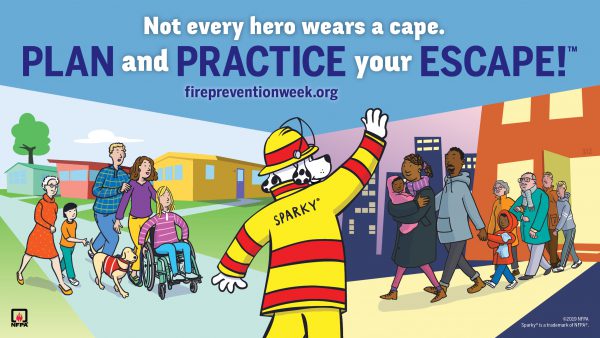
Fire prevention week has been designated as October 6-12, 2019 by the National Fire Protection Association (NFPA). Fire prevention week has a long history, dating back to 1925, when President Calvin Coolidge proclaimed fire prevention week as a national observance. Now, it has become the longest running health observance in the country.
At Total Fire & Safety, we use this time to reiterate to our clients how important it is to stay compliant with NFPA codes and keep everyone within their buildings, warehouses and commercial spaces supplied with fire extinguishers, sprinklers, and suppression systems that are ready to go when fire strikes.
The theme of this year’s campaign is “Plan and Practice Your Escape.” So how can a business observe National Fire Prevention Week? Here’s a few ideas.
- Share safety information from the NFPA with your employees. Not only will it help them at work, but at home too!
- If you do not do so regularly, heed the theme of the program and “plan and practice your escape.” Every employee should be mindful of their best options in the event of an emergency.
- Call your fire protection service for an inspection of your equipment and make sure all your extinguishers, alarms, sprinkler systems, etc. are in working order.
- Consider a training class for fire extinguisher operation, first aid, or CPR.
Around the Total Fire & Safety service area, the observance is being commemorated with lots of events at community fire stations. For more information, see the website for each individual fire department.
Friday, Oct. 4
Saturday, Oct. 5
- Tinley Park Fire Department: 17355 68th Court, Tinley Park, 9 a.m. – 1 p.m. Open House
- Schaumburg Fire Department: 950 W. Schaumburg Road, Schaumburg, 11 a.m. – 2p.m. Public Safety Open House
- Clarendon Hills Fire Department: 316 Park Ave., Clarendon Hills, 11 a.m. – 2 p.m. Open House
- Minooka Fire Department: 7901 E. Minooka Road, Minooka, 11 a.m. – 2 p.m. Open House
- Hazel Crest Fire Department: 2903 W. 175th St., Hazel Crest, 9 a.m. – 12 p.m. Open House
- Frankfort Fire District: 20101 La Grange Road (Event address), Frankfort, IL 60423, 9:30 a.m. – 12:30 p.m. Gas Safety Event
- Palatine Fire Department: 39 E Colfax Street, Palatine, IL 60067, 10 a.m. – 2 p.m. Open House
- Darien-Woodridge Fire District: 7550 Lyman Ave., Darien, IL 60561, 10 a.m. – 1 p.m. Open House
- Oswego Fire Protection District: 3511 Woolley Road, Oswego, IL 60543, 11 a.m. – 3 p.m. Open House
- Calumet City Fire Department: 24 State Street, Calumet City, IL 60409, noon
Sunday, Oct. 6
- Belvidere Fire Department: 123 S. State Street, Belvidere, IL 61008, 1 – 4 p.m. Open House
- Mokena Fire Protection District: 19853 S. Wolf Road, Mokena, IL 60448, 7:30 a.m. – noon Open House
- Lake Zurich Fire Department: 321 South Buesching Road, Lake Zurich, IL 60047, 11 a.m. – 2 p.m. Open House
- Batavia Fire Department: 1400 Main St, Batavia, IL 60150, 11 a.m. – 3 p.m.
- McHenry Township Fire Protection District: 3610 W. Elm Street, District Administration Office, McHenry, IL 60050, 11 a.m. – 1 p.m.
- Naplate Fire Department: 2000 W Ottawa Ave, Naplate, IL 61350, 12 – 3 p.m.
- Manteno Community Fire Protection District, 13 S WALNUT ST, MANTENO, IL 60950, 12 – 3 p.m.
Monday, Oct. 7
- Western Springs Fire Dept: 4353 Wolf Road, Western Springs, IL 60558, 6 – 8:30 p.m. Open House
Wednesday, Oct. 9
- Lombard Fire Department: 50 E St Charles Road, Lombard, IL 60148, 6 – 8 p.m. Open House
- Downers Grove Fire Department: 6701 Main Street, Downers Grove, IL 60516, 6:30 – 8:30 p.m. Open House
Thursday, Oct. 10
Friday, Oct. 11
- South Chicago Heights Fire Department: 185 W Sauk Trail, South Chicago Heights, IL 60411, 5:30 – 7:30 p.m. Open House
Saturday, Oct. 12
- Northbrook Fire Department: 1840 Shermer Road, Northbrook, IL 60062, 9 a.m. – 12 p.m. Open House
- Crystal Lake Fire Rescue: 100 W Woodstock St, Crystal Lake, IL 60014, 9 a.m. – 12 p.m. Open House
- Prospect Heights: 10 E. Camp McDonald Rd, Prospect Heights, IL 60031, 9 a.m. Open House
- La Grange Park Fire Department: 447 N. Catherine Ave., La Grange Park, IL 60526, 10 a.m. – 1 p.m. Open House
- Elgin Fire Department: 650 Big Timber Road, Elgin, IL 60123, 10 a.m. – 3 p.m. Open House
- City of Rockford: 204 S. First St., Rockford, IL 61104, 10 a.m. – 1 p.m.
- Homewood Fire Department: 17950 Dixie Highway, HOMEWOOD, IL 60430, 11 a.m. to 2 p.m.
- Plainfield Fire Protection District: 23748 W. 135th Street, Plainfield, IL 60544, 11 a.m. – 2 p.m. Open House
- Westmont Fire Department: 6015 S. Cass Ave., Westmont, IL 60559, 11 a.m. – 3 p.m. Open House
- Alsip Fire Department: 11946 S. Laramie, Alsip, IL 60803, 1 – 3:30 p.m. Open House
- Calumet City Fire Department, Station 2: 1270 Pulaski Rd, Calumet City, 12 – 3 p.m. Open House
Sunday, Oct. 13
- North Palos Fire Protection District: 10629 S Roberts Rd, Palos Hills, IL 60465, 7 a.m. – 12 p.m.
- Byron Fire Department: 123 S. Franklin St., Byron, IL 61010, 11 a.m. – 3 p.m. Open House
- Elmhurst Fire Department: 601 S York, Elmhurst, IL 60126, 12 – 4 p.m. Open House
Wednesday, Oct. 23
- Chicago Ridge Fire Department: 10063 Virginia, Chicago Ridge, IL 60415, 6 – 9 p.m.
Fire protection and preparation is not just a week-long observance but a 365 day a year, 24/7 job. At Total Fire & Safety, we have everything you need to keep your employees and tenants protected. If we can ever assist your business with NFPA compliance for your commercial fire protection, contact us at 630-960-5060.
Category: Business Safety, Fire Equipment Inspections, Fire exits, Fire News, Fire Safety, Health and Safety, LED Lighting, NFPA Compliance, Total Fire and Safety Tags: commercial fire safety, emergency exit lights, fire and safety equipment, fire and safety needs, fire and safety solutions, fire safety in the news, lifesafety | Comments Off on 2019 Fire Prevention Week is for Businesses Too!
-
September 25, 2019 by Total Fire and Safety
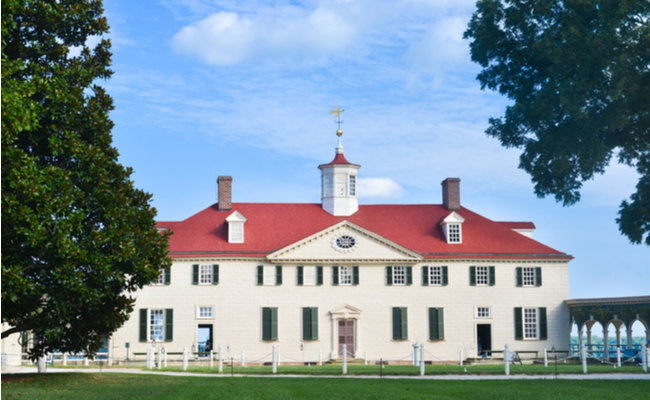
If you have ever visited a historic building, what do you notice? Old documents, precious artwork, impeccable craftmanship, and… fire protection equipment? Hopefully your answer to the latter is no. Ideally, historic properties should still maintain the look and feel of an era gone by, but how do you do it and still install and maintain fire equipment that’s up to code?
Everyday commercial buildings are damaged by fires, causing a huge loss for any business. However, these damages can be repaired, sometimes improving the building from its previous structure. This is not the case for historic properties. The true extent of the loss is more significant than the cost of simply restoring the building. Any artifacts, documents, etc. that are lost represent a priceless piece of our heritage.
For the fire safety expert, the challenge of fire protection in a historic building presents three distinctive challenges:
Preserving the Historic Character
In order to protect historic buildings, sometimes structural engineers, preservation specialists and the building managers must get involved in addition to the fire protection experts (TFS). Together they design a solution that meets the needs of NFPA compliance without ruining the historic character of a building. For example, a historic door cannot be replaced with a fire-proof door, however installing sprinklers on either side of the door may be the answer.
Fire safety is prioritized even with our most beloved historic institutions. For example, currently there is a major renovation going on at Mount Vernon, the home of our first president, George Washington. Part of this extensive construction is major improvements to the fire suppression system. When all is said and done, fire safety for Mount Vernon and its visitors will be vastly improved for generations to come.
Total Fire & Safety’s client roster includes many historic buildings, especially in the Village of Downers Grove. We are proud to be able to keep visitors safe while maintaining the distinctive character of each building.
Staying Out of Sight
Ideally, fire protection systems must sufficiently protect a building but remain aesthetically pleasing. One common cause of concern is the fire sprinkler system. Not only do fire sprinklers damage a building’s contents, but they can deface the historic structure. The answer lies in coming up with creative solutions for fire sprinklers:
1. Use copper tubing vs. black or steel pipe to blend in with the building’s architecture.
2. Faux materials can be used that resemble the buildings time period to conceal fire sprinkler pipes.
3. Install painted fire sprinkler heads to match the area.
Another form of hidden fire protection commonly used in historic buildings is wireless fire alarms. Wireless alarms are an ideal, minimally invasive solution when needing to preserve the look and feel of a building. Other advantages to wireless fire alarms include:
- Wireless alarm monitoring provides faster response
- No cables are required for installation
- They eliminate false alarms, which can be costly for non-profit buildings
Updating Outdated Utilities
Many historic facilities have poor water pressure. This renders a fire sprinkler upgrade useless unless an underground line, additional line, or fire pump is installed. Total Fire & Safety can be helpful in making the right decision for any historic property.
Regardless of the fire protection systems installed, working to minimize the ignition of a fire should be a priority. Scheduling fire safety inspections annually is important to maintain a safe environment for the building and its occupants. Total Fire and Safety works not only to uphold the integrity of an historic building, but also provides the best fire protection equipment around. Give us a call today! 630-960-5060
Category: Business Safety, Fire Equipment Inspections, Fire exits, Sprinkler Systems, Total Fire and Safety Tags: commercial fire protection, commercial fire safety, commercialfiresprinkler, fire and safety equipment, fire and safety needs, fire and safety solutions, Firesprinkler, firesprinklerinspections, Total Fire and Safety, wireless fire alarm monitoring, wireless fire alarms, wireless fire alarms for business | Comments Off on Preserving Fire Safety in Historic Buildings
-
June 19, 2019 by Total Fire and Safety
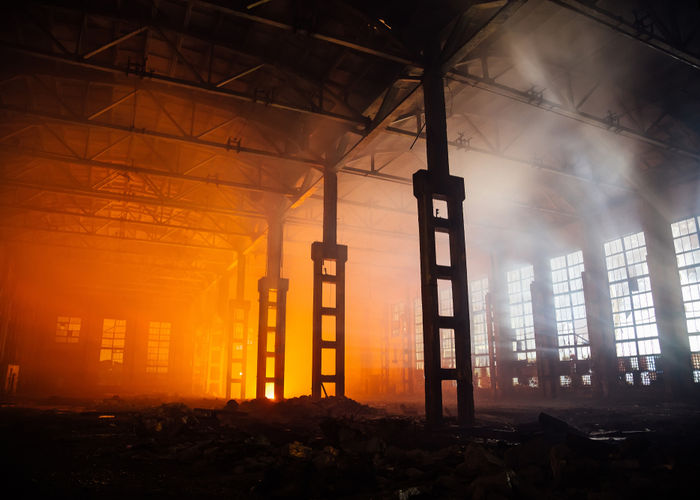
According to legend, the cause of the greatest fire in Chicago was a cow kicking over a lantern in a barn. In 1871, the entire city of Chicago was engulfed in flames. The fire lasted two days, left 300 people dead and over $200 million in damage. The event changed Chicago. Stricter fire codes were implemented, structures were built with different materials, and fire departments were equipped with better equipment and advanced training methods.
Today, fires in Chicago rarely go unexplained due to investigative divisions within the fire departments. The investigative teams are well trained in how to identify common causes of fires in Chicago. The most common causes of fires in Chicago vary by type.
Common Causes of Residential Fires
- Overusing extension cords
- Overusing Christmas lights/stringing them together under furniture
- Smoking materials (cigarettes, cigars, etc.…)
- Heating or electrical malfunction
- Cooking or kitchen fires
Common Causes of Industrial Fires
- Combustible dust
- Hot work
- Flammable gas or liquid
- Equipment and machinery fires
- Electrical hazard fires
How Fires are Investigated
Whether it is a residential fire or industrial fire, criminal or accidental, fires in Chicago and around the country all have a determining factor. The responsibility for finding the determining factor is up to the fire department. From a public standpoint, finding a cause seems impossible. How do they do it?
Upon arriving at the scene, firefighters note the color of the flames, the amount of smoke, the rate at which the fire spreads, and the sound it makes. These are all clues as to what is burning and how it is burning. It is incumbent of the firefighters to protect the evidence at the scene by:
- Limiting excessive fire suppression
- Preventing needless destruction to a property
- Using markers or cones to identify evidence
- Writing notes or making voice recordings of observations
- Covering areas that contain evidence
- Preserve delicate evidence like shoe or tire tracks
Once the fire is extinguished, the fire investigators dig through the ashes. They take photographs prior to and during the investigation for documentation. The objective of investigators is to locate the point of origin. This is achieved through the char patterns, direction of melt, and heat shadows. The burn patterns are often “V” shaped like an inverted cone. The fire burns upward, in a V-shaped pattern away from point of origin. The location is usually the most damaged by the fire. Although most of the determination of origin is science-based, there is a little bit of guessing and witness accounts. Fires in Chicago are likely to have one of four reasons:
- Electrical issues
- Natural acts
- Open flames
- Human action
Fires in Chicago have decreased over the years with an average of eight fire per day. Fortunately, fatal fires are rare, but even one is too many. It’s important for residents and businesses to practice fire safety. Is your business well equipped against fires? Total Fire and Safety can help safeguard your building and those occupying it with fire alarms, fire extinguishers, first aid kits, emergency lights and more. We’ll inspect your property to ensure it is up to code and even provide training classes for employees so they know how to use the equipment in an emergency. Give TFS a call today at 630-960-5060.
Category: Business Safety, Fire Extinguishers, Fire News, Fire Safety Tags: commercial fire protection, commercial fire safety, fire and safety solutions, Fire Extinguisher, fireextinguisher, firesafetytraining | Comments Off on In the Aftermath: Finding the Causes of Fires in Chicago
-
May 20, 2019 by Total Fire and Safety

(Photo credit: Dreamstime ID 95654936 © Wavebreakmedia Ltd | Dreamstime.com)
With the rise in popularity and construction of senior living centers, fire safety continues to be a concern to keep our grandparents, parents, and aging loved ones protected. According to the United States Fire Administration, in 2015, older adults represented 15 percent of the U.S. population and suffered 40 percent of all fire related deaths. They are also 2.7 times greater risk of dying in a fire than the total population. Those 85 and older were 3.8 times more likely to die in a fire than the total population.
The elderly in multi-level dwellings are at higher risk of dying in a fire for several reasons. They may be on medication that impairs them from taking stairs down to safety, or their mobility issues may prevent them from moving quickly enough. They may live alone or have no one to call for assistance. Educating property managers, caretakers, and the elderly on fire safety for senior citizens is one step we can take in protecting this aging generation. Below are some considerations for property managers and their tenants.
1. Test Smoke Alarms
Smoke is a silent killer. Senior citizens with hearing problems who sleep without a hearing aid could be killed in their sleep. Having a working smoke alarm in every room and hallway helps, but they should be effective for the user. Strobe alarms are best, and seniors can install alarms that shake their bed to rouse them in the event of a fire. Most importantly of all, make sure to test smoke alarms every month so they are always in compliance.
2. Sit Your Butt Down…in the proper place!
Smoking is the number one cause of fire deaths in the country. Remind senior citizens never to smoke in bed and especially not near flammable oxygen tanks. Seniors can use deeper or heavier ashtrays to avoid ashes flipping or falling onto the rug and starting a fire. The best way to put butts out is with sand and water.
3. Create a Fire Escape Plan
Seniors may have less than three minutes to escape danger in the event of a fire. They should have a fire escape plan and practice it, knowing all the accessible exits. For seniors suffering from dementia or Alzheimer’s who have escape proof doors, it is important they have a prearranged escort in the event of a fire.
4. Stay in the Kitchen
Seniors should always stay in the kitchen when cooking. Most kitchen fires begin because food is left unattended, so if they must leave the kitchen while cooking they should turn the burner off. Even a short absence from the kitchen can unexpectedly turn into an extended amount of time away. If seniors must leave the kitchen, they should take a cooking utensil or potholder with them to serve a helpful reminder. Also, remind seniors to never cook with loose or dangling sleeves that can easily ignite and burn a senior, or potentially start a major fire.
5. Daily Necessities
Seniors should think about what they use to get around every day, like glasses, a wheelchair, a cane, etc. These items should be placed next to the bed for easy access in case of fire. A phone and a whistle should also be at bedside. The whistle lets people know where you are and enables you to warn others of the fire. Escape is always the priority; call the fire department later. If trapped, use the phone to call for help. Seniors with wheelchairs or walkers should check exit routes ahead of time to be sure they are accessible or plan an alternate route. Inform building managers or neighbors of the plan. If your impairment makes it impossible to escape in the event of a fire, discuss your concern with landlord, or check with the fire department.
6. Don’t Overload Outlets or Extension Cords
Inspect your extension cords regularly for fraying, exposed wire, or loose plugs. Unplug extension cords when not in use. If you need to plug in multiple appliances, use an extension cord approved by the Underwriter’s Laboratories (UL), a nationally recognized testing laboratory.
As their population begins to grow, fire safety for senior citizens cannot be stressed enough. Property managers, caretakers, the elderly, and their families should all be aware of the increased risk to the age group and try to protect them. The professionals at Total Fire and Safety are ready to help ensure your building has fire equipment that is working properly. We provide the life safety features that keep fire safety for your residents, including senior citizens, a main priority. Give us a call today! 630-960-5060
Category: Fire Alarm Monitoring, Fire exits, Fire Extinguishers, Fire Safety, Total Fire and Safety, Uncategorized Tags: fire and safety solutions, Fire Extinguisher, fire safety, fire safety solution, fire safety training, fire training, first aid, lifesafety, Total Fire and Safety, wireless fire alarm monitoring | Comments Off on Fire Safety for Senior Citizens
-
April 24, 2019 by Total Fire and Safety
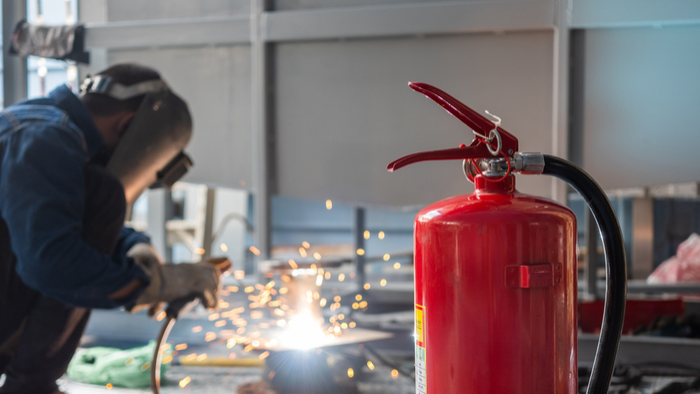
According to the National Fire Protection Agency (NFPA), between 2011 and 2015, there was an estimated 37,910 fires at industrial properties each year. These industrial fires resulted in 16 civilian deaths, 273 civilian injuries, and $1.2 billion in property damage.
Industrial fires are serious, but there are several things you can do at your plant or factory to minimize the possibility of an industrial fire. First, it’s important to know how they usually start.
The five most common causes of industrial fires are…
1. Combustible Dust Fires
A combustible dust is any dust or fine material that has the potential to catch fire and explode when it is mixed in the air. Many times, materials that are normally considered non-flammable can act as a combustible when fine particles are mixed with air in a particular concentration. Combustible dust happens in two waves. A primary explosion causes particles to become airborne, and then the dust cloud can ignite and cause a secondary explosion, much more severe than the first. Combustible dust can bring down entire facilities.
How do I Prevent Combustible Dust Fires?
- Implement a hazardous dust inspection, testing, housekeeping, and control program.
- Regularly inspect for dust residues in open and hidden areas.
- Use proper dust collection systems.
- If ignition sources are present, use cleaning methods that do not generate dust clouds.
- Control smoking, open flames, and sparks (mechanical and friction).
2. Hot Work Fires
Hot work is any activity that involves open flames or generates sparks or heat. This includes welding, heat treating, grinding, thawing pipes, torch cutting, brazing, soldering, etc. Hot work becomes a fire hazard when sparks and molten material travel…often as far as 35 feet, sometimes igniting combustible dust in other areas.
How do I Prevent Hot Work Fires?
- Train personnel on the hazards associated with hot work and make sure they are using proper safety equipment.
- Clear area of flammable materials including dust, gases, and liquids.
- Make sure a safety professional is on site to provide supervision of the work.
- Avoid hot work if possible.
3. Flammable Liquid and Gas Fires
These are most common in chemical plants. Flammable liquids and gases can ignite off sparks from the previous hazards or add fuel to an already burning fire.
How Do I Prevent A Flammable Gas Fire?
- Know the hazards of each flammable liquid and gas on-site. Read and follow the safety information for storage and follow the material safety data sheet included with the product.
- Properly store hazardous materials according to OSHA.
- Keep ignition sources away from flammable gases and liquids.
- Provide personal protective equipment, like gloves, bodysuits, vests, goggles, shoes etc.
4. Equipment and Machinery Fires
Equipment not properly installed, maintained, or operated correctly is a major cause of industrial fires. This is especially true for equipment associated with hot work and heating. Even machinery not seen as a fire hazard can become a risk with lack of proper maintenance.
How Do I Prevent Equipment and Machinery Fires?
- Training can help employers and employees identify possible risks and what to do if they find one.
- Keep the machines, equipment, and areas surrounding them, clean.
- Prevent machine overheating by following the manufacturer’s guidelines for recommended maintenance procedures.
5. Electrical Hazard Fires
Electrical fires are most common in manufacturing plants and include wiring that is exposed or not up to code, overloaded outlets, extension cords, overloaded circuits, static discharge, etc. A spark from electrical hazards can cause ignition of combustible dust and flammable liquids and gases.
How Do I Prevent Electrical Hazard Fires?
- Don’t overload electrical equipment or circuits.
- Unplug temporary equipment not in use.
- Avoid using extension cords.
- Use antistatic equipment as advised by OSHA and NFPA.
- Follow a regular cleaning schedule to ensure combustible dust and other hazardous materials are removed from areas that house equipment and machinery.
It can seem overwhelming to have to safeguard your facility against industrial fire hazards, but the pros at Total Fire and Safety can help you identify and prevent risks throughout your facility. They also provide fire safety training to educate employees on proper fire safety equipment operation and life safety procedures.
To take the first step in keeping industrial fires at bay at your facility, call Total Fire and Safety at 630-960-5060 or reach us at our 24/7 emergency line, 630-546-8909.
Category: Business Safety, Fire Safety, NFPA Compliance Tags: commercial fire protection, commercial fire safety, fire and safety solutions, fire safety training, Industrial Fire Prevention, Industrial Fire Safety, Total Fire & Safety | Comments Off on The Best Way to Prevent Industrial Fires
-
February 27, 2019 by Total Fire and Safety
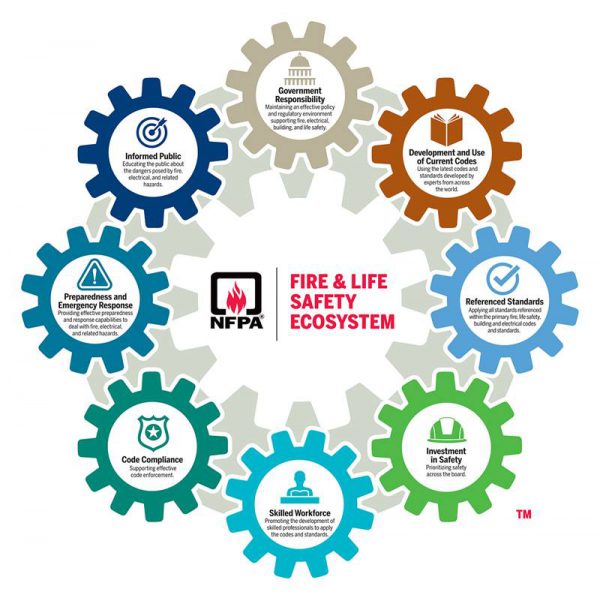 Image: NFPA Website The fire and life safety ecosystem led the discussion at the 2018 NFPA Conference and Expo. What is the fire and life safety ecosystem? Like any ecosystem, it is comprised of elements that work together to achieve a functioning system—in this case, eight separate elements that have to do with fire and safety. Several of them are the responsibility of the government, while many call upon the public to enforce and deliver. Regardless of who is charged with the responsibility, the goal throughout the ecosystem is to prevent major disasters from fire, electrical, and other hazards. When tragedies occur, it is likely there was a breakdown in one or more parts of the fire and life safety ecosystem. Here are the eight components relating to the fire and life safety code:
- Government Responsibility: Policy makers must maintain effective policy and regulatory environment and not prioritize politics over the public’s safety. When life safety codes are stripped for any reason, people’s lives are endangered for the sake of political gain.
- Development and Use of Current Codes: Government and building designers must implement the latest codes and standards or risk losing the latest technology and research in fire, electrical, life safety.
- Referenced Standards: All standards within the fire, life, building, safety, and electrical codes must be addressed or the right products and practices will not be used, possibly leading to disastrous results.
- Investment in Safety: Property managers and need to make an investment in safety to comply with the latest standards and codes. Hiring a company like Total Fire and Safety means an investment in safety. All the latest fire safety technologies are always available from TFS and we can design a program to fit any company’s needs and budget.
- Skilled Workforce: Promote the development of skilled professionals to apply the codes and standards. For over 20 years, TFS has employed highly skilled, highly trained, and highly dedicated workers in order to put customers’ safety above all else.
- Code Compliance: Effective code enforcement is necessary. Fire Marshalls and other officers must conduct regular inspections to ensure safety and code compliance.
- Preparedness and Emergency Response: Provide effective preparedness and emergency response capabilities to deal with fire, electrical, and related hazards. Train employees on emergency equipment, fire safety drills, designated leader in emergencies, etc.. TFS provides training classes for employees, as well as, informative literature on how to react in an emergency and much more.
- Informed Public: Educating the public is important, as is educating businesses about the specific fire hazards in their facilities.
No one cog in the fire and life safety ecosystem can keep us all safe from harm. Even all the pieces together, working in tandem, may not prevent every disaster, but they can certainly prevent many. By practicing and implementing the various areas outlined in the fire and life safety ecosystem, we can all create a safer community. At Total Fire and Safety, we are committed to helping you play your role in the fire and life safety ecosystem. Contact us today to discuss your fire safety needs or call 630-960-5060.
Category: Business Safety, Fire code violation, Fire Safety, Health and Safety, NFPA Compliance, Total Fire and Safety Tags: fire and safety equipment, fire and safety needs, fire and safety solutions, fire safety solution, fire safety training, Total Fire and Safety | Comments Off on What’s a Fire and Life Safety Ecosystem?
-
December 4, 2018 by Total Fire and Safety

A brand new year is a great time for businesses to evaluate what they can improve upon, even in terms of their commercial fire safety. No business is completely immune to accidental fires and having the right equipment in place year round can prevent potential devastation.
According to the National Fire Protection Association (NFPA), more than 3,300 fires break out in office buildings across the U.S each year. The NFPA reports that a number of people are killed or injured with an estimated $112 million in property damage.
If you’re a business set on achieving your 2019 goal of reaching NFPA compliance, take a look at checklist of equipment you need below for commercial fire safety. Anything missing? Call Total Fire & Safety. We can help!
____ Alarms
____ Extinguishers and Suppression Systems
- Conduct tests regularly to ensure function and pressure when activated.
- Schedule routine maintenance of equipment.
- Store extinguishers in open areas for easy access.
____ Emergency Lighting
- Effective emergency lighting throughout the building will help occupants to safety in an emergency.
- Schedule regular maintenance and inspections.
Equipment is essential and necessary to prevent major damage but people are too! Whether it’s putting out a fire or tending to the injured, what good is the equipment if you don’t have employees able to use it?
____ First Aid
____ Training Courses
- A comprehensive fire equipment training course on the use of fire equipment and first aid can place confidence in employees and keep everyone safe.
- Training employees reduces the chance of small fires starting and spreading.
You could have all the equipment ready and employees trained to use it but they need something else.
____ Emergency Preparedness Plan
- Remind employees to REACT-(remove from danger, ensure doors/windows are closed, activate alarm, call 911, treat as dangerous.)
- Conduct fire drills.
- Schedule inspections of all fire equipment.
- Have employees trained on firefighting equipment.
Making sure you have commercial fire safety in place can seem a daunting task but the pros at Total Fire and Safety are here to simplify it. TFS covers everything including inspection, maintenance, training, and keeping your building up to code so you are well protected in the event of an unforeseen fire. Give us a call today at 630-960-5060.
Category: Business Safety, Fire Alarm Monitoring, Fire Equipment Inspections, Fire exits, Fire Extinguishers Tags: commercial fire protection, commercial fire safety, commercial first aid kit, emergency exit lights, emergency lighting, fire and safety solutions, Fire Extinguisher, fire safety, fire safety training, fireextinguisher, firesafetytraining, firesprinklerinspections, first aid | Comments Off on The Business Owner’s Checklist for Commercial Fire Safety in 2019
|

|
|
|
|
|
|

 Facebook
Facebook
 Instagram
Instagram
 LinkedIn
LinkedIn









